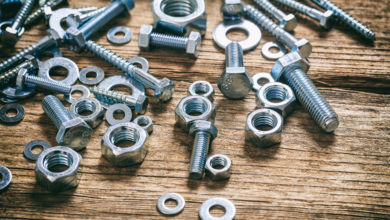Construction Hoists Lifts: Essential Tools for Modern Vertical Transportation on Job Sites

In the realm of modern construction, where towering structures define skylines and project timelines are tighter than ever, the efficiency of vertical transportation plays a vital role. These specialized mechanical devices are engineered to move heavy materials and personnel between different levels of a building under construction.
This article explores the significance, functionality, types, benefits, and future trends associated with construction hoists lifts, shedding light on why they have become critical assets in contemporary building projects.
What Are Construction Hoists Lifts?
These systems are especially valuable in high-rise construction projects where manual transportation or crane usage would be inefficient or unsafe.
Unlike cranes that lift materials over long distances using boom arms, hoists lifts are fixed to the side of the construction hoists lifts structure and operate vertically along a mast. They are enclosed (for passenger lifts) or open (for material-only hoists), offering safe, rapid, and repeated movement from the ground to various floors.
See also: Detachable Containers and Prefabricated Container Houses: A Modern Housing Revolution
Core Components of Construction Hoists Lifts
Understanding the machinery’s structure helps in appreciating its power and reliability. Standard construction hoists lifts include:
- Cage or Carriage: The platform that carries materials or people.
- Mast Section: A steel framework supporting vertical movement.
- Drive System: Typically electric with rack-and-pinion gear motors.
- Control Panel: Located inside the cage or at the base for floor selection and emergency control.
- Safety Devices: Include braking systems, overload sensors, and emergency stops.
Major Types of Construction Hoists Lifts
Construction projects vary widely in scale, which is why different hoist designs exist to accommodate diverse site requirements. Here are the main types:
1. Material Hoists
Designed to transport materials only. They feature open platforms and have no safety mechanisms for passengers.
2. Passenger and Material Hoists
Also known as dual-purpose hoists, these are fully enclosed and equipped with all safety features to carry workers and materials safely.
3. Rack and Pinion Hoists
Use a gear (pinion) rotating along a fixed track (rack), powered by electric motors. These are common in tall building projects due to their reliability and ease of maintenance.
4. Wire Rope Hoists
These lifts use a pulley system with steel cables.
5. Single or Double Cage Hoists
Single cage hoists carry one load at a time, while double cage systems allow simultaneous transportation, improving efficiency.
How Construction Hoists Lifts Work
Here’s a step-by-step breakdown:
- Loading: Materials or workers enter the cage at the ground or an intermediate level.
- Floor Selection: The operator or automated system selects the destination level.
- Vertical Movement: The cage moves steadily to the selected floor.
- Secure Stoppage: Safety brakes and locking systems ensure the hoist halts precisely at the right floor.
- Unloading: Contents are removed, and the cage is ready for the next run.
These steps happen within a few seconds, making hoists one of the most time-saving machines on any construction site.
Advantages of Construction Hoists Lifts
Here’s why:
1. Time Efficiency
Hoists reduce vertical travel time to mere seconds.
2. Adaptability
Modern hoists can grow with the building. As each floor is added, the mast can be extended to match.
Safety and Compliance Standards
Operating construction hoists lifts requires adherence to international and national safety regulations, such as:
- EN 12159 (European standard for construction hoists)
- ANSI/ASME A10.4 (U.S. standard for personnel hoists)
To comply, hoists must have:
- Over-speed governors
- Load limit sensors
- Emergency braking systems
- Fall arrest mechanisms
- Interlocked gates
Modern Technological Advancements
As the construction industry embraces digital transformation, hoists are also evolving with smarter features.
IoT and Remote Monitoring
Sensors installed in hoists transmit real-time data about performance, faults, and maintenance needs.
Automated Control Systems
Touchscreen interfaces, biometric access, and pre-programmed floor sequencing increase efficiency.
Green Technologies
Electric hoists with energy regeneration systems reduce carbon emissions, aligning with green building standards.
Silent Operation
Noise reduction technologies allow for quieter operation, especially important in urban or night-time construction.
Conclusion
In today’s fast-paced construction world, construction hoists lifts are more than just vertical elevators — they are productivity enablers and safety guardians. From transporting tons of concrete to carrying skilled technicians to the top floor, these machines ensure that no level is out of reach.
With continuous advancements in design, safety, and functionality, construction hoists lifts will remain integral to future building projects. Whether rented or owned, when properly chosen and maintained, they unlock new dimensions of efficiency, safety, and project success.





